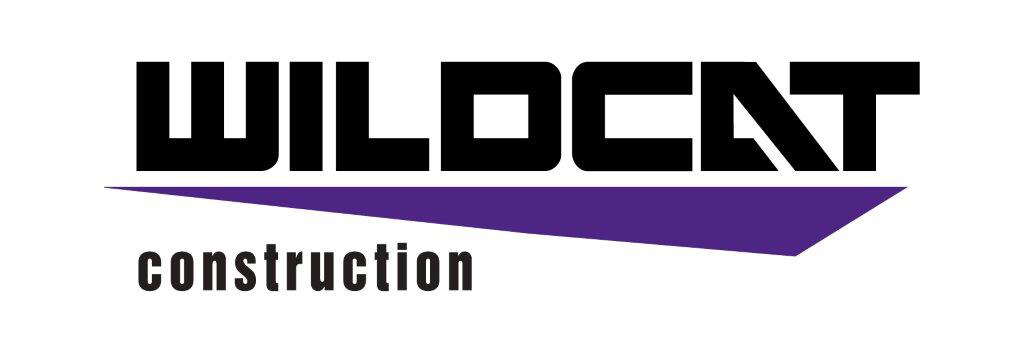Information
-
Audit Title
-
Project Name
-
Project Number
-
Project Location
-
Project Supervisor
-
Conducted on
-
Weather
-
Subcontractors onsite?
-
List names
Previous HSE Inspection
-
Has the last inspection been reviewed?
-
Have all safety issues from this inspection been corrected?
1.0 Jobsite General
-
1.1 Is a "Site Specific Health and Safety Plan" required, and if so, is it available for review?
-
1.2 Are posting requirements prominently displayed on the bulletin board i.e. OSHA posters, Davis-Bacon Wages, Emergency Phone Numbers, etc.?j
-
1.3 Are permits maintained onsite?
-
1.4 Is the OSHA 300 Summary posted onsite? (February 1st thru April 30th)
-
1.5 Are toolbox safety meetings held weekly?
-
1.6 Are First Aid kits available and adequately stocked?
-
1.7 Are stretch and flex exercises performed daily?
2.0 Housekeeping and Sanitation
-
2.1 Are floors and/or ground free from trash and debris?
-
2.2 Are waste containers provided and used?
-
2.3 Are sanitary facilities (male/female) adequate and clean?
-
2.4 Is there an adequate supply of potable water onsite?
-
2.5 Is there adequate lighting for work being done?
-
2.6 Are minor spills reported and cleaned up promptly?
-
2.7 Are passageways and exits clear?
-
2.8 Is dirt and debris removed from streets and sidewalks to help prevent public injury?
-
2.9 If there is a maintenance yard, are parts (cutting edges, teeth, etc.) stored in an orderly fashion?
3.0 Construction Area - Site Security
-
3.1 Are warning signs in place?
-
3.2 Are open ditches and drop-offs protected?
-
3.3 Are ladders lowered and secured when not in use?
-
3.4 Are sidewalks protected?
-
3.5 Is construction fence maintained onsite?
-
3.6 Is the fence locked at end of shift?
-
3.7 Are holes and/or openings protected and marked appropriately?
-
3.8 Are adequate warning signs of detours and obstructions in place?
-
3.9 Are personal vehicles controlled onsite?
-
3.10 Is GPS equipment secured at end of shift?
-
3.11 Are keys removed from equipment and doors locked when shift is over?
-
3.12 Is equipment parked and secured in a well lit area?
-
3.13 Are light plants, generators, trailers etc. protected from theft?
4.0 Hazard Communication
-
4.1 Is a written HAZCOM program onsite?
-
4.2 Are the employees trained in the "Global Harmonized System" (GHS)?
-
4.3 Are employees informed of how to retrieve a Safety Data Sheet (SDS) on the company website?
-
4.4 Are materials properly stored and labeled?
-
4.5 Are the labels legible?
-
4.6 Is there a spill kit available onsite and is it adequately stocked?
5.0 Fire Prevention
-
5.1 Are there an adequate number of fire extinguishers available onsite?
-
5.2 Have practices and procedures been established to control potential fire hazards and ignition sources?
-
5.3 Are employees aware of the fire hazards of the materials and processes to which they are exposed?
-
5.4 Are fire extinguishers inspected monthly by the company and annually by an outside source?
-
5.5 Are employees trained in the use of fire extinguishers?
-
5.6 Are flammables and combustibles labeled and properly stored ?
-
5.7 Is equipment shut down prior to fueling?
-
5.8 Is smoking prohibited within 50 feet of any fueling operations?
-
5.9 Are gasoline engines allowed to cool down before fueling?
6.0 Flammable and Combustible Materials
-
6.1 Are there flammables or combustibles onsite? (If no, hit N/A on all and proceed to Section 7)
-
6.2 Are combustible scrap, debris and waste materials (oily rags) stored in covered metal receptacles and removed from the project site promptly?
-
6.3 Are proper storage methods used to minimize the risk of fire and spontaneous combustion?
-
6.4 Are approved containers being used for the storage and handling of flammable and combustible liquids?
-
6.5 Are all connections tight on drums and combustible liquid piping (vapor and liquid)?
-
6.6 Are all flammable liquids kept in closed containers when not in use?
-
6.7 Are bulk drums of flammable liquids grounded or bonded to containers during dispensing?
-
6.8 Are safe practices followed when gasoline, diesel, or liquid petroleum gas (propane) is stored, handled and used?
-
6.9 Are all solvent wastes and flammable liquids kept in fire-resistant, covered containers until they area removed from the worksite ?
-
6.10 Are fuel-gas cylinders and oxygen cylinders separated by distance, fire resistant barriers or other means while in storage?
-
6.11 Are fire extinguishers provided for the type of materials they will extinguish and placed in areas where they are to be used?<br> <br> CLASS A: Ordinary combustible material<br> CLASS B: Flammable liquids, gas or grease<br> CLASS C: Energized electrical equipment
-
6.12 Are appropriate fire extinguishers mounted within 75 feet of outside areas containing flammable liquids and within 10 feet of any inside storage area for such materials?
-
6.13 Are fire extinguishers mounted so that employees do not have to travel more than 75 feet for Class A fires or 50 feet for a Class B fire?
-
6.14 Are all fire extinguishers serviced, maintained and tagged at least annually?
-
6.15 Are fire extinguishers inspected monthly and removed from service if not fully charged?
-
6.16 Are "NO SMOKING" signs posted in areas where flammable and combustible materials are used or stored?
-
6.17 Are safety cans used for dispensing flammable and combustible liquids?
7.0 Fuel Operations
-
7.1 How is equipment being fueled onsite?
-
7.2 Is it prohibited to fuel an internal combustion engine with a flammable liquid while the engine is running?
-
7.3 Are fueling operations done in such a manner that the likelihood of spillage will be minimal?
-
7.4 When spillage occurs during fueling operations, is the spilled fuel washed away completely, evaporated, or other health and safety guidelines followed to control vapors before restarting the engine?
-
7.5 Are fuel tank caps replaced and secured before starting the engine?
-
7.6 In fueling operations, is there always metal contact between the container and the fuel tank?
-
7.7 Are fueling hoses of a type designed to handle the specific type of fuel?
-
7.8 Is it prohibited to handle or transfer gasoline in open containers?
-
7.9 Are open lights, open flames, sparking, or arcing equipment prohibited near fueling or transfer of fuel operations?
-
7.10 Is smoking prohibited in the vicinity of fueling operations?
-
7.11 If using an Aboveground Storage Tank (AST) is it placarded with appropriate signs i.e. Gasoline (1203), Diesel (1993), No Smoking, etc.?
-
7.12 If using an Aboveground Storage Tank (AST) are fire extinguishers located between 25' - 75 feet away from tank?
8.0 Electrical
-
8.1 Are preliminary inspections performed by employees to determine what conditions exist prior to starting work on electrical equipment or lines?
-
8.2 Are lockout/tagout procedures being performed when electrical equipment is being serviced?
-
8.3 Are all portable hand-held electrical tools and equipment either grounded or double-insulated?
-
8.4 Are ground fault circuit interrupters used to protect employees?
-
8.5 If not, is an assured equipment grounding program in place?
-
8.6 Are live electrical parts guarded against accidental contact?
-
8.7 Are extension cords protected from damage?
-
8.8 Are extension cords removed from service when cut, worn, frayed or missing prongs?
-
8.9 Are conductors entering boxes, cabinets or fittings protected from abrasion?
-
8.10 Are all unused openings (including conduit knockouts) of electrical enclosures and fittings closed with appropriate covers, plugs, or plates?
-
8.11 Are portable generators grounded?
-
8.12 Are signs being used to warn workers of electrical dangers (above and below ground)?
-
8.13 Are temporary lights equipped with guards to prevent accidental contact with bulb?
-
8.14 Is the circuit breaker panel clearly labeled and secured?
-
8.15 Is there sufficient access and working space around junction boxes? (36" minimum)
9.0 Personal Protective Equipment (PPE)
-
9.1 Have levels of personal protection been established?
-
9.2 Are employees instructed on the proper use of the PPE?
-
9.3 Are protective goggles or face shields provided and worn where there is any danger of flying particles or corrosive materials?
-
9.4 Are approved safety glasses (ANSI Z87-1) being worn at all times in areas where there is a risk of eye injury?
-
9.5 Are high visibility vests provided and worn by all personnel?
-
9.6 Are hardhats provided and worn where danger of flying or falling objects exists?
-
9.7 Are hardhats inspected periodically for damage to the shell and suspension system?
-
9.8 Is appropriate foot protection being worn, as required by policy?
-
9.9 Are air contaminants present i.e. paint, solvents, dust, etc. that would require the use of respirators or dust masks?
-
9.10 Are eyewash bottles and/or stations located in the vicinity of employees who are working in a potentially hazardous area?
-
9.11 Is there a designated area for eating and drinking where there is no exposure to dust, fumes, toxic materials or other health hazards?
-
9.12 Is hearing protection available to all employees when sound levels exceed 90 decibels in an 8 hour day?
10.0 Hand and Power Tools
-
10.1 Are tools and cords inspected prior to each use?
-
10.2 Are tools and cords in good condition?
-
10.3 Are tools and cords stored properly when not in use?
-
10.4 Are the right tools being used for the task at hand?
-
10.5 Are tools properly grounded or double insulated?
-
10.6 Are guards and/or attachments being used on equipment or tools that require them?
-
10.7 Are damaged or malfunctioning tools tagged out and not used until repaired or replaced?
-
10.8 Are whip-checks being used on air hoses exceeding a 1/2" inside diameter?
-
10.9 Are employees instructed not to use electrical power tools near flammable gases/vapors?
-
10.10 Is proper PPE being worn by employees?
11.0 Portable Ladders
-
11.1 Are portable ladders being used onsite? (If no, hit N/A on all and proceed to Section 12)
-
11.2 Are all ladders maintained in good condition? (rungs, side rails, hardware and fittings securely attached, moveable parts operating freely without binding or undue play)
-
11.3 Are non-slip safety feet provided on each ladder?<br>
-
11.4 Are ladder rungs and steps free of mud, grease and oil?
-
11.5 Are ladders setup correctly (not on boxes, barrels or other unstable bases to obtain additional height)?
-
11.6 Are employees facing the ladder when ascending or descending?
-
11.7 Are employees prohibited from using ladders that are missing labels, broken, missing steps, rungs or cleats, broken side rails or other faulty equipment?
-
11.8 When portable ladders are used to gain access to elevated platforms, roofs, etc., does the ladder extend 3' above the elevated surface?
-
11.9 Are employees instructed not to use the top step of portable ladders, including stepladders, as a step?
-
11.10 Are ladders prohibited from being placed in front of door openings except when the door is blocked open, locked or guarded?
-
11.11 Are ladders placed at appropriate angle (1 foot away from the wall for every 4 foot of length)?
-
11.12 Are portable ladders secured at the base to prevent ladder from moving?
-
11.13 If using portable metal ladders are they legibly marked with signs reading "CAUTION" - Do Not Use Around Electrical Equipment or equivalent wording?
-
11.14 When using a stepladder, is the side braces and cross braces locked?
12.0 Hoisting and Rigging
-
12.1 Are hoisting and rigging activities being conducted onsite? (If no, hit N/A on all and proceed to Section 13)
-
12.2 Is rigging equipment inspected prior to each use and periodically thereafter?
-
12.3 Are ropes, slings, chains, hooks, cables, clevises and chokers in good condition?
-
12.4 Are damaged slings, chains and other rigging equipment removed from service?
-
12.5 Are slings padded and protected from sharp corners?
-
12.7 Are U - bolts (crosby clips) being used and are they placed and spaced correctly?
-
12.6 If provided, are safety latches on hooks operable?
-
12.8 Are employees instructed not to stand or walk underneath the load?
-
12.9 Are tag-lines being used to prevent the load from swinging?
-
12.10 Is barricade tape placed around the swing radius to prevent unauthorized access?
-
12.11 Is there an identification tag on the sling or lifting chain and is it legible?
13.0 Trenching and Excavations
-
13.1 Are trenching or excavation activities being conducted onsite? (If no, hit N/A on all and proceed to Section 14)
-
13.2 Has a "Competent Person" been designated to oversee excavation activities?
-
13.3 Have utilities been located and properly marked prior to excavation?
-
13.4 Are utilities refreshed every 30 days as required?
-
13.5 Has the trench been inspected by a competent person prior to work and have they completed the trench log?
-
13.6 Is the trench inspected by the competent person after every rainstorm or other hazard-increasing occurrence to determine if additional protection against slides and cave-ins is necessary?
-
13.7 Has a visual and manual test been performed on the soils and documented on the trench log?
-
13.8 Are materials, spoil piles and equipment at least 2' away from the edge of excavation - If not, are they kept in place by retaining devices?
-
13.9 Is the sloping or benching system configured correctly to the soil type? (B-1 Maximum Allowable Slopes)
-
13.10 Are adjacent roads, sidewalks and utilities supported and protected?
-
13.11 If a trench box is being used, is the tabulated data onsite and available for review?
-
13.12 Is the trench box extended at least 18" above grade to prevent loose debris from falling or rolling into the trench (if sloping is used to protect workers)?
-
13.13 If trench box is not extended above top of excavation, is it at ground level?
-
13.15 If the trench is greater than 4 feet deep has the atmosphere been tested when there is a possibility of oxygen deficiency or build-up of hazardous gases?
-
13.14 Does the trench box sit no more than 2 feet above bottom of trench (or less if soil collapsing behind or below trench box) ?
-
13.16 Are ladders or ramps being used in in trenches greater than 4 feet deep?
-
13.17 Are ladders placed every 25 feet of lateral movement for employees?
-
13.18 Are ladders properly secured and extend 3 feet above lower level?
-
13.19 Are ladders placed inside the trench box?
-
13.20 If used, are equipment ramps adequate?
-
13.21 Are precautions taken to protect employees from water accumulating inside the trench?
-
13.22 Is surface water or runoff diverted and/ or controlled to prevent water accumulating inside the trench?
-
13.23 If trench is greater than 20 feet deep has it been approved by a registered PE?
-
13.24 Are open trenches or excavations onsite protected by berms, fence, etc.?
-
13.25 If using berms onsite, are they constructed correctly? (good course material and at mid-axle height of the largest piece of equipment onsite)
-
13.26 Are barriers or a fence placed around open excavations near pedestrian or vehicle thoroughfares?
-
13.27 Are personnel onsite maintaining a minimum of 6 feet away from edge of excavation?
-
13.28 Is equipment kept a safe distance away from the edge of excavation?
-
13.29 Are employees prohibited from working on the faces of sloped or benched excavations above other employees?
14.0 Cranes
-
14.1 Are cranes being used onsite? (If no, hit N/A on all and proceed to Section 15)
-
14.2 Are annual inspections completed and available for review?
-
14.3 Are inspections performed prior to use and as needed by operator?
-
14.4 Are all safety devices working properly (alarms, level indicator, brakes, seat belt, etc.)?
-
14.5 Are the outriggers extended and working properly?
-
14.6 Are supporting materials being used (blocking, mats, pads, cribbing, etc.)?
-
14.7 Are power lines deactivated or are warning signs placed to worn employees of overhead clearance?
-
14.8 Is the cranes swing radius barricaded or demarked?
-
14.9 Are rated load capacities posted on the crane?
-
14.10 Is the crane on level ground and is it capable of holding the load?
-
14.11 Is the boom angle indicator available and working properly?
15.0 Heavy Equipment
-
15.1 Has a pre/post trip inspection been completed on equipment?
-
15.2 Are equipment inspection books available for review?
-
15.3 Are lights, horn and backup alarm functioning properly?
-
15.4 To save on idle time, is equipment being turned off after 15 minutes?
-
15.5 Are haul roads well maintained and laid out properly?
-
15.6 Are haul roads inspected for steep grades, sharp curves, limited site distance, slippery surfaces, etc.?
-
15.7 Are traffic patterns established and safe?
-
15.8 Are equipment speeds established according to site conditions?
-
15.9 Are fire extinguishers located on equipment and inspected at least monthly?
-
15.10 Are seat belts being worn by employees?
-
15.11 Are seat belts in good condition and not expired?
-
15.12 Are windows clean and free of obstructed views i.e. mud, grease, etc.?
-
15.13 Are windows free of cracks or breaks?
-
15.14 Are floors of equipment free from debris (bottles, pop cans, etc.)?
-
15.15 Are employees using three points of control when mounting and dismounting equipment?
-
15.16 Are cell phones, MP3 players, etc. being used by employees while operating equipment?
-
15.17 Are all attachments on equipment lowered when approached and when shift ends?
-
15.18 Are wheels chocked or turned towards berm when parked?
-
15.19 Are employees riding in equipment without proper seating?
16.0 Motor Vehicles
-
16.1 Has a pre/post trip Inspection been completed on tractor and/or trailer?
-
16.2 Are inspection books (DVIR) available for review?
-
16.3 Are drivers qualified to drive truck or tractor?
-
16.4 Have tie down chains been inspected prior to use (lowboy trailer)?
-
16.5 Is the deck of the lowboy trailer in good condition?
-
16.6 Are lights, horn, brakes and backup alarm functioning properly?
-
16.7 Do drivers check for rocks lodged in the duals before pulling onto roadway?
-
16.8 Are fire extinguishers located on water truck or tractor?
-
16.9 Are fire extinguishers inspected monthly and annually as required?
-
16.10 Are seat belts being worn correctly by driver?
-
16.11 Are seat belts in good condition and not expired?
-
16.12 Are windows clean and free of obstructed views?
-
16.13 Are floors free from debris (bottles, pop cans, etc.)?
-
16.14 Did the driver of the water truck complete a DVIR (if applicable)
-
16.15 Are employees using three points of control when mounting and dismounting?
-
16.16 Are cell phones, MP3 players, etc. being used by employees while driving truck?
17.0 Fall Protection
-
17.1 Are employees either walking and/or working 6 feet above a lower level? (If no, hit N/A on all and proceed to Section 18)
-
17.2 Guardrails - are top rails a minimum of 42 inches above the leading edge of the tread or walking surface?
-
17.3 Guardrails - are mid rails between the top rail and the walking/working surface?
-
17.4 Guardrails - are toe boards 4 inches nominal in vertical height from its top edge to the level of the floor, platform, runway, or ramp?
-
17.5 Guardrails - are top rails capable of holding 200 lbs. of force?
-
17.6 Guardrails - are mid rails capable of holding 150 lbs. of force?
-
17.7 Guardrails - are guardrail systems surfaced to prevent injury to an employee from punctures or lacerations, and to prevent snagging of clothing.
-
17.8 Personal Fall Arrest - is a body belt being worn for personal fall arrest? (only permitted as a positioning device)
-
17.9 Personal Fall Arrest - is harness and lanyard inspected before each use?
-
17.10 Personal Fall Arrest - have employees been properly trained on inspection procedures?
-
17.11 Personal Fall Arrest - do employees know appropriate anchorage points for each task?
-
17.12 Personal Fall Arrest - is the anchorage point capable of holding 5,000 lbs.?
-
17.13 Personal Fall Arrest - are all anchorage points of body harness located at shoulder height?
-
17.14 Personal Fall Arrest - has the free-fall distance been considered, so that the employee doesn't hit the lower level?
-
17.15 Personal Fall Arrest - if using fall restraint system (retractable) has It been inspected before use?
-
17.16 Personal Fall Arrest - is there a plan to get the employee down safely in the event of a fall?
18.0 Welding / Cutting
-
18.1 Are welding/cutting activities being performed onsite? (If no, hit N/A on all and proceed to Section 19)
-
18.2 Is proper PPE being worn?
-
18.3 Is a fire extinguisher present during welding/cutting operations?
-
18.4 Are hoses and cords controlled and out of the way?
-
18.5 Are cables protected and in good condition?
-
18.6 Are screens and shields in place?
-
18.7 Are cylinders transported vertically and with caps on?
-
18.8 Are oxygen cylinders and fittings kept away from oil and grease?
-
18.9 Are oxygen and acetylene stored properly i.e. vertically, secured?
-
18.10 Are bottles not being used secured with caps in place?
-
18.11 Are "Hot Work" permits completed and posted in areas requiring such permit?
-
18.12 Are valves shut off and regulators backed off after use?
-
18.13 Are flash back arrester placed on hoses (O2 and fuel gas)?
-
18.14 Are areas inspected for fire hazards prior to welding/cutting operations?
19.0 Confined spaces
-
19.1 Are there any confined spaces onsite? (If no, hit N/A on all and proceed to Section 20)
-
19.2 If yes, has the "Confined Space Analysis" form been completed to identify and evaluate the space?
-
19.3 Are danger signs posted (or other equally effective means of communication) to inform employees about the existence, location and dangers of confined spaces?
-
19.4 Has anyone surveyed the surrounding area for other potential hazards including drifting vapors and/or gases outside the space?
-
19.5 Is the written confined space program onsite and available to employees?
-
19.6 Have guardrails and/or temporary barriers been installed to protect employees from falls and from foreign objects entering the space?
-
19.7 Has the atmosphere in the confined space been tested, using a calibrated direct-reading instrument, prior to entry?
-
19.8 Has the atmosphere been tested at multiple levels and recorded in the Confined Space Entry Form?
-
19.9 Have all physical hazards been eliminated and/or isolated without entering the space?
-
19.10 Before entry operations begin, has the entry permit been signed by the entry supervisor?
-
19.11 Has the entry permit been made available at the time of entry to all authorized entrants so they can confirm that pre-entry preparations have been completed?
-
19.12 If using a ventilation system, is it in good working condition and capable of supplying clean fresh air to the space?
-
19.13 Is the atmosphere in the space being continuously monitored while workers are in the space?
-
19.14 Do the entrants, attendants and entry supervisor know their respective duties and responsibilities?
-
19.15 Is necessary personal protective equipment (PPE) available and being used?
-
19.16 Is lighting equipment that meets the minimum illumination requirements and one that is explosion proof available and being used?
-
19.17 Is all portable electrical equipment used inside the confined space equipped with ground-fault protection?
-
19.18 Has equipment, such as ladders, needed for safe ingress and egress by authorized entrants been provided?
-
19.19 Is communication equipment available to allow the attendants to communicate with authorized entrants, as necessary, to monitor their status and alert them of the need to evacuate the permit space?
-
19.20 Is non-entry rescue equipment available and being used?
-
19.21 If using local emergency services (fire dept.), have they been informed of the entry and will they give us advance notice if they are unable to respond?
20.0 Environmental Controls
-
20.1 Is stormwater compliance under our contract? (If no, hit N/A on all and proceed to Section 21)
-
20.2 Has a stormwater permit been filed and onsite for review?
-
20.3 Are waterways and Inlets protected?
-
20.4 Is the silt fence being maintained?
-
20.5 Does the silt fence need any repairs?
-
20.6 Is the vehicle tracking pad effective and working properly?
-
20.7 Is there a concrete washout and Is it working properly?
-
20.8 Is dust being controlled onsite?
-
20.9 Are there any BMP's in need of repair?
-
20.10 Are dewatering activities being performed onsite?
-
20.11 Is the dewatering permit onsite for review?
-
20.12 Is there an above ground storage tank onsite and is it protected?
21.0 Traffic Controls for Roadway/Highway Construction
-
21.1 Are roadway or highway activities being conducted onsite? (If no, hit N/A on all and proceed to Section 22)
-
21.2 Is the accumulation of sand, gravel, debris, dust, oil, etc. cleaned from the intersections as needed?
-
21.3 Is dust controlled on unpaved surfaces?
-
21.4 Are equipment crossings well maintained?
-
21.5 Are signs posted designating right-of-way at equipment crossings?
-
21.6 Are unpaved roadway surfaces maintained by frequent grading/compaction?
-
21.7 Are supplemental signs or other warning devices used to slow traffic on high speed roads prior to flagger station?
-
21.8 Are police officers used for traffic control?
-
21.9 Are supervisors and flaggers properly trained and certified?
-
21.10 Are flaggers wearing high visibility clothing and proper PPE?
-
21.11 Is distance from sign to flagger kept current?
-
21.12 Are radios or other acceptable forms of communication used when flaggers are out of the line of sight at either end of traffic?
-
21.13 Do flaggers have an adequate escape path?
-
21.14 Do flaggers maintain eye contact until vehicles are stopped?
-
21.15 Are flaggers relieved periodically?
-
21.16 Are flagger stations well lit at night?
-
21.17 Are lane closures or changes clearly marked?
-
21.18 Is there a Method of Handling Traffic (MHT) onsite and is it current?
-
21.19 Area traffic patterns in place and controlled?
-
21.20 Are barricades or fences well marked and lighted?
-
21.21 Are there ample warning signs for bumps, unpaved surfaces, low shoulders, etc.?
22.0 Miscellaneous Hazards
-
22.1 Have protective caps or other protective devices been placed on all impalement hazards?
-
22.2 Have all protruding nails and/or other sharp objects been bent over or removed?
-
22.3 Have all trip hazards been eliminated?
23.0 Comments
Inspected By
-
Signature of Inspector:
-
Signature of Supervisor:















